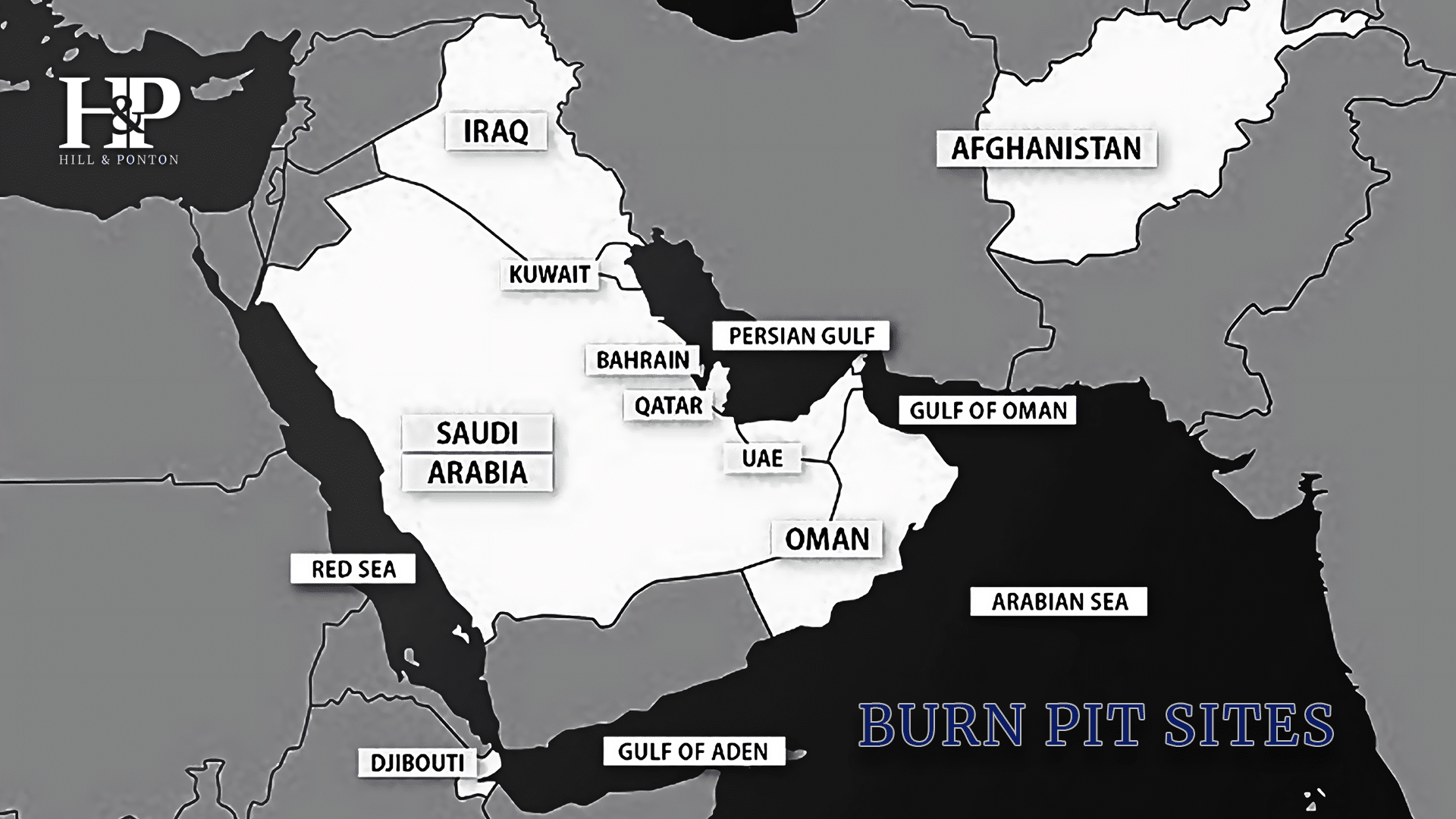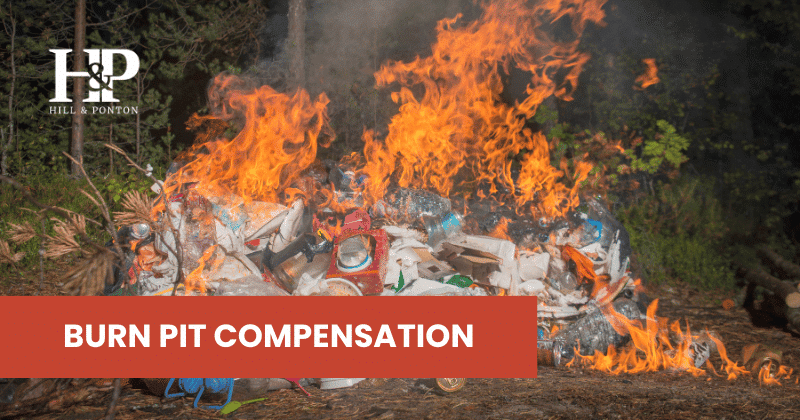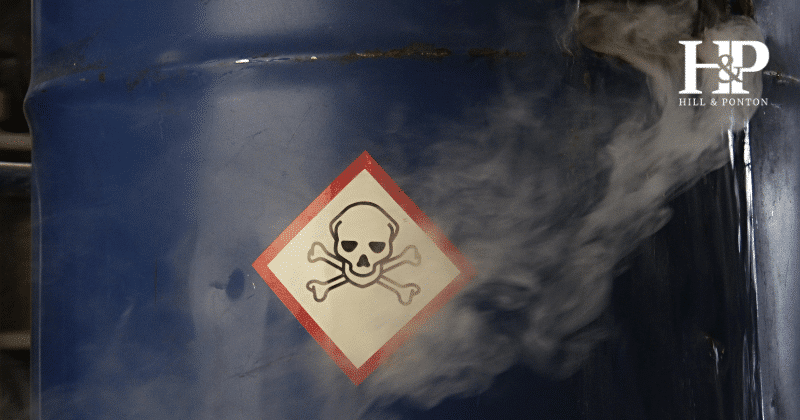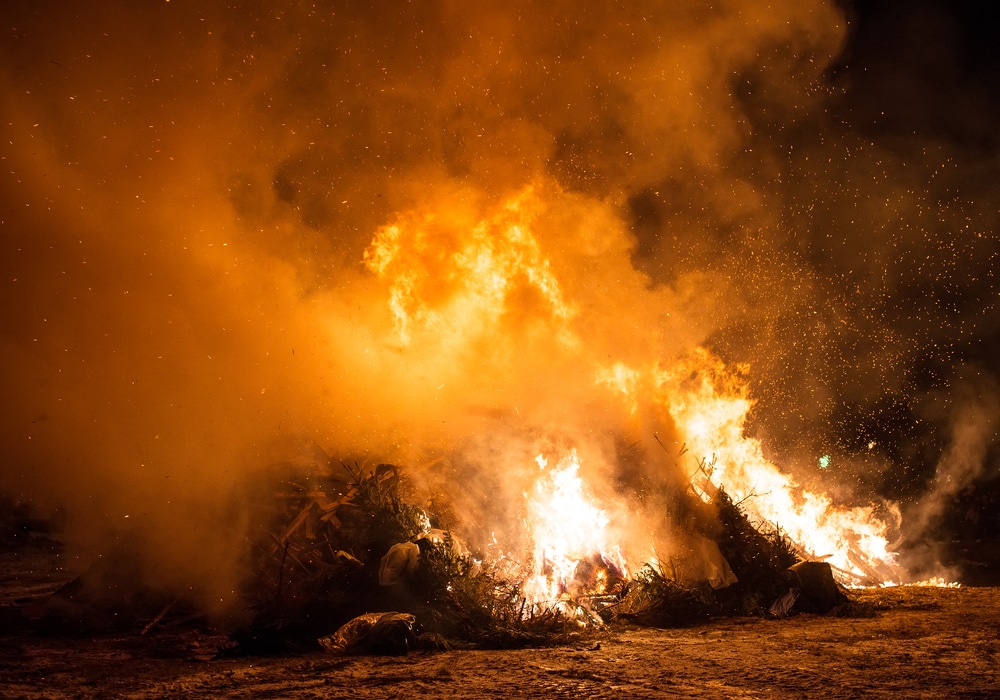The use of burn pits was a common way to get rid of waste at military sites in Iraq and Afghanistan. Many veterans are suffering from long-term health problems due to their burn pit exposure while in military service .
This article will discuss VA disability benefits for burn pit exposure, the ratings for certain conditions caused by these exposures, and other important information related to burn pit compensation.
How to Get VA Disability for Burn Pit Exposure
To be eligible for VA Disability Compensation due to conditions linked to burn pit exposure, you must meet the following criteria:
If you served in a burn pit-exposed area during the Gulf War and then later received a diagnosis of a certain medical condition, you may be eligible for VA disability compensation for that diagnosed medical condition. You cannot receive VA benefits for “burn pit exposure” or “burn pit compensation” alone.
Some medical conditions and illnesses that may be related to burn pit exposure include but are not limited to:
- Skin conditions
- Chronic bronchitis
- Asthma
- Respiratory conditions
- Pulmonary conditions
- Cardiovascular conditions
- Cancer (lung, brain, skin, leukemia, and lymphoma)
- Sleep apnea
- Headaches
- Neurological problems
Who is Eligible?
In order to receive VA disability benefits, you would need to prove that your disability was caused by your exposure. If you served in the following military operations, you may have been exposed to burn pits:
- Operation Iraqi Freedom
- Operation Enduring Freedom
- Operation New Dawn
- Djibouti, Africa on or after September 11, 2001
- Operation Desert Storm or Operation Desert Shield
- Southwest Asia theater of Operations on or After August 2, 1990

VA assumes that certain conditions are linked to events surrounding a veteran’s military service, such as burn pit exposure. If you are diagnosed with what is called a “presumptive condition”, you do not need to prove a medical nexus (connection) between your condition and your service in the military to be eligible for VA disability compensation and benefits.
Burn Pits VA Disability Rating
The VA will assign a rating using the rating schedule for each condition that is claimed in relation to burn pit exposure. For example, if a veteran is claiming VA disability compensation benefits for a respiratory condition or other health concerns, then the VA will use the rating schedule that corresponds with respiratory conditions .
So, in other words, your burn pits “rating” will be based on the severity of your symptoms that can be shown to have worsened or directly caused by the burn pits. VA will look at the rating criteria of the corresponding condition you are claiming which could range from 10% to 100%, with disability ratings at 100% receiving compensation of over $3,000 a month.
For years, the VA had not previously recognized any illnesses as officially presumed to be related to service in Iraq or Afghanistan due to toxic exposure but that has been changing in recent years. VA now recognizes 33 presumptive conditions related to burn pits.
Burn Pit Presumptive Conditions List
| Types of Cancer Presumptive to Burn Pits | Other Presumptive Conditions |
| Adenocarcinoma of the trachea | Asthma post-service |
| Adenosquamous carcinoma of the lung | Chronic bronchitis |
| Brain cancer | Chronic obstructive pulmonary disease (COPD) |
| Gastrointestinal cancer | Chronic rhinitis |
| Glioblastoma | Chronic sinusitis |
| Head cancer | Constrictive or obliterative bronchiolitis |
| Kidney cancer | Emphysema |
| Large cell carcinoma of the lung | Granulomatous disease |
| Lymphatic cancer | Interstitial lung disease |
| Lymphoma | Pleuritis |
| Melanoma | Pulmonary fibrosis |
| Neck cancer | Sarcoidosis |
| Pancreatic cancer | |
| Reproductive cancer | |
| Respiratory cancer | |
| Salivary gland tumors of the lung or trachea | |
| Sarcomatoid carcinoma | |
| Squamous cell carcinoma of the larynx or trachea | |
| Typical and atypical carcinoid |
VA recommends veterans who were previously denied benefits for these conditions to file a supplemental claim. The Hill & Ponton team may be able to assist you – get a free evaluation here.

Examples of VA Ratings for Conditions Caused by Burn Pits
Asthma Post-Service
Asthma is a disease where the lung becomes obstructed. The airways and bronchi swell up and close, causing difficulty breathing.
A spirometry test can be used to determine the severity of asthma, and the ratings from that test determine your VA disability rating.
For asthma, you can be rated 10%, 30%, 60% or 100% disabled.
Chronic Bronchitis
Chronic Bronchitis is a respiratory condition that causes long-term inflammation of breathing tubes.
Individuals suffering from this condition will wheeze a lot, have shortness of breath, and cough up mucus.
For Chronic Bronchitis you can be rated 10%, 30%, 60% or 100% disabled.
Chronic Rhinitis
Rhinitis is inflammation of the mucous membrane in the nose, usually by a viral infection like a cold, or an allergic reaction. Ratings include:
- Allergic or Vasomotor Rhinitis rated 10% or 30% disabled
- Bacterial Rhinitis rated 10% or 50% disabled
- Granulomatous Rhinitis rated 20% or 100% disabled
Chronic Sinusitis
Sinusitis is inflammation of sinus tissues, which are hollow spaces around the bones in your face.
For Sinusitis you can be rated 0%, 10%, 30% or 50% disabled .
Constrictive or Obliterative Bronchiolitis
Constrictive Bronchiolitis is a rare respiratory condition causing a person’s airway to narrow/constrict. The result is a substantial amount of coughing, shortness of breath, and symptoms that are similar to those of asthma or COPD. It is sometimes difficult to diagnose because of how similar the symptoms are.
While there is no specific diagnostic code for Constrictive Bronchiolitis, the VA references diseases of the trachea and bronchi (codes 6600-6604) to help find a similar condition, and it is rated at 10%, 30%, 60% and 100% disabled.
Chronic Obstructive Pulmonary Disease (COPD)
COPD refers to multiple respiratory conditions that affect the entire respiratory system, including breathing and airflow to the lungs. For COPD you can be rated 10%, 30%, 60% or 100%.
Emphysema
Emphysema is a condition that causes shortness of breath, fatigue, wheezing and the inability to not get enough oxygen. It is caused by damage to the alveoli, or the small air sacs in the lungs, which affects the body’s ability to get oxygen into the bloodstream. For Emphysema you can be rated 10%, 30%, 60% or 100%
Granulomatous Disease
Chronic Granulomatous is a condition affecting the immune system, because of improperly functioning white blood cells that fight off bacterial and fungal infections. Individuals with this disease are at a much higher risk for infections.
While this disease does not have its own diagnostic code, it is referenced in multiple places. A few codes that may be utilized to rate granulomatous disease include:
- Diagnostic Code 6521 – injuries to the Pharynx
- Diagnostic Code 6524 – Granulomatous Rhinitis
- Diagnostic Code 6828 – Eosinophilic Granuloma
Interstitial Lung Disease
Interstitial Lung Disease refers to many disorders of the lung, all of which cause inflammation and pulmonary fibrosis (scarring of the lungs).
These diseases are typically characterized by difficulty breathing, fatigue and coughing, and can be anywhere from mild to severe. For Interstitial Lung Disease you can be rated 10%, 30%, 60% or 100% disabled
Pleuritis
Pleuritis/Pleurisy is a respiratory condition characterized by inflammation of the pleura, which are thin layers of tissue that separate the lungs from the walls of the chest. They assist with helping the lungs move smoothly when breathing.
For Pleuritis you can be rated 10%, 30%, 60% or 100%.
Pulmonary Fibrosis
Pulmonary Fibrosis is a condition when scarred and damaged lungs thicken and harden, which makes breathing more difficult. The VA rates pulmonary fibrosis between 10% and 100% disabled.
Sarcoidosis
Sarcoidosis is a condition that causes granulomas (small inflammatory cells) to grow, typically in the lungs and lymph nodes. Sarcoidosis begins with similar symptoms that include: fatigue, weight loss, painful lymph nodes, joint pain. The symptoms will later vary depending on what part of the body is being affected.
See the VA Ratings for Sarcoidosis.
How Does Burn Pit Exposure Lead to Illness?
For many years the military utilized burn pits in a variety of locations to dispose of waste on bases. These open-air burn pits released toxins, carcinogens, smoke and ash into the air, which came into contact with bodies by a variety of means–through the skin, noses and lungs.
Post-exposure, thousands upon thousands of veterans have reported diseases impacting their lungs and breathing, as well as other ailments, as a result of having been exposed.
Substances Released into the Air by Burn Pits
Air samples taken by the Department of Defense (DoD) at Joint Based Balad in Iraq, revealed particulate matter, polycyclic aromatic hydrocarbons, volatile organic compounds (VOCs), and toxic organic halogenated dioxins and furans in the air.
- Particulate Matter (PM) is a blend of small particles and liquid that can pass through the throat and nose. These particles can cause serious health issues impacting the heart and the lungs.
- Polycyclic Aromatic Hydrocarbons (PAHs) are over 100 chemicals formed by incomplete burning of organic substances such as gas and coal.
- Volatile Organic Compounds (VOCs) the chemicals that are emitted from materials such as paints or disinfectants, in gaseous form, which can be easily breathed in.
Does the Military Still Use Burn Pits?
So far, the military is still using burn pits as a “last resort” to get rid of waste (human waste, garbage, chemicals, and anything you can think of).. There are currently nine burn pit sites in operation.
The military mostly uses clean-burning incinerators, instead of burn pits. As of March 2019, all of the U.S. sanctioned burn pits are in the Middle East and are under military control in Syria, Afghanistan, and in Egypt.
What is the Airborne Hazards and Open Burn Pit Registry?
The Airborne Hazards and Open Burn Pit Registry offers a way to start building your VA disability claim. You can add your name to this registry and then begin creating records that you were exposed and later became ill.
Adding your name to the registry does not initiate a disability claim. The registry was established as a way for the VA to track service members who were affected for data purposes.
Eligible veterans may complete a questionnaire and an evaluation at a VA medical facility, which is a free benefit. It is not a Compensation and Pension (C&P) exam and is not required to receive benefits.
However, the questionnaire and the evaluation may be used to support a disability claim, should the veteran choose to file one.
Have Questions About Getting the Right VA Rating?
The attorneys at Hill & Ponton are here to support you in obtaining Burn Pit exposure benefits. If you intend to appeal a denied claim, you can contact us for a free evaluation of your case.
If you haven’t filed your initial claim yet, we offer a free ebook to get you started on the right foot! The Road to VA Compensation Benefits will help break down the claims process from start to finish.





